What's New
Displaying results 3451 - 3460 of 4914

Resource | Guidelines,
The precise numbers of people living with HIV, people who have been newly infected or who have died of AIDS are not known. Achieving 100% certainty about the numbers of people living with HIV globally, for example, would require testing every person in the world for HIV regularly—which is logistically impossible and poses ethical problems. But we can estimate those numbers by using other sources of data.
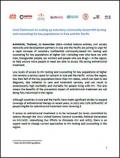
Resource | Publications,
United Nations entities, civil society networks and development partners in Asia and the Pacific are joining to urge for a rapid increase of voluntary confidential community-based HIV testing and counseling for key populations at higher risk—including men who have sex with men, transgender people, sex workers and people who use drugs— in the region, to help ensure more people in need are able to access life-saving antiretroviral treatment.
Low levels of access to HIV testing and counselling for key populations at higher risk remains a serious cause for concern in Asia and the Pacific. Across the region, less than half of the key populations know their HIV status, which can lead to late diagnosis, late initiation to care and treatment services, and can result in unnecessarily high morbidity and mortality for people living with HIV. This also means the benefits of the prevention impact of antiretroviral treatment are not being fully maximized in the region.
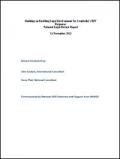
Resource | Publications,
This report provides findings and recommendations from the National Review of Cambodia's legal framework and its impact on access to health and HIV prevention and treatment services for people living with HIV (PLHIV) and most-at-risk populations (MARPs). The National Review was conducted from September – November 2013.
The objectives of the National Review were:
- to analyze the legal environment (including laws, policies, law enforcement practices and access to justice) and assess its impact on access to and uptake of HIV prevention, treatment, care and support services by people living with HIV and key HIV-affected populations; and
- to make concrete recommendations for removing legal and policy barriers to improve the enabling environment for HIV responses.

Resource | Guidelines,
This document describes a process that would enable countries to respond more effectively to their respective HIV epidemics. Using this process, they will be able:
- to review and analyse surveillance efforts already undertaken in the country
- to describe the trends of the epidemic
- to provide recommendations to policy-makers, and
- to design methods for additional data collection to strengthen ongoing surveillance systems.
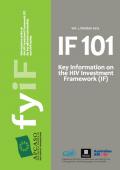
Resource | Publications,
The HIV Investment Framework (IF) is a model for HIV and AIDS investment and prioritisation for maximum impact. The IF advocates for a short-term increase in HIV funding in order to reduce funding requirements over the long term.
IF is aligned to the investment thinking approach to resourcing of the HIV response. This means treating resources for the HIV response as investments that will deliver returns, rather than as expenses that will always have gaps demanding to be filled.

Resource | Publications,
The UNITAID 2013-2016 Strategy includes the treatment of HIV/AIDS and co-infections as one of six strategic objectives. This scoping report focuses on issues, challenges and opportunities related to one of the most important HIV co-infections—Hepatitis C virus (HCV)—and represents UNITAID’s first effort to gather market intelligence on products for the diagnosis and treatment of HCV in individuals co-infected with HIV and HCV.
Though preliminary in nature, this scoping report gives an overview of the prevalence and impact of HCV and HIV co-infection, existing medicines and diagnostics as well as those in the pipeline, commodity access issues, and market shortcomings.
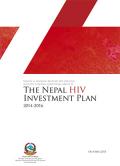
Resource | Publications,
This national investment plan is a renewed call for coordinated action from the public and private sectors, civil society and international partners to reduce Nepal’s HIV burden. Drawing on programmatic data and a 2013 review of Nepal’s national response, a 4-month participatory process was undertaken to develop this plan.
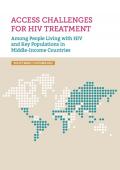
Resource | Publications,
Middle-income countries (MICs) are facing a crisis of containing costs for treating people living with HIV. These countries carry a high burden of HIV, and transmission of the virus is often concentrated amongst key populations: people who inject drug (PWID), men who have sex with men (MSM), sex workers (SW), transgender (TG), prisoners and migrants.
This policy brief examines the challenges to affordable HIV treatment access in MICs amongst people living with HIV (PLHIV) and key populations.

Resource | Fact Sheets,
This tenth edition of the World Prison Population List gives details of the number of prisoners held in 222 independent countries and dependent territories. It shows the differences in the level of imprisonment across the world and makes possible an estimate of the world prison population total.
The World Prison Population List is compiled from a variety of sources. In almost all cases the original source is the national prison administration of the country concerned, or else the Ministry responsible for the prison administration. Most figures relate to dates between September 2011 and September 2013. Since prison population rates (per 100,000 of the national population) are based on estimates of the national population they should not be regarded as precise. In order to compare prison population rates in different regions of the world median rates have been used because they minimise the effect of countries with rates that are untypically high or low.
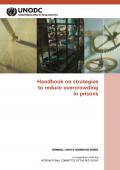
Resource | Guidelines,
This handbook is one of a series of tools developed by UNODC to support countries in the implementation of the rule of law and the development of criminal justice reform. It is designed to be used by all actors involved in the criminal justice system, including policymakers, legislators, prison managers, prison staff, members of non-governmental organizations and other individuals interested or active in the field of criminal justice and prison reform. It also addresses health and related professionals involved in the provision of services in the penitentiary system. It can be used in a variety of contexts, both as a reference document and as a training tool.





